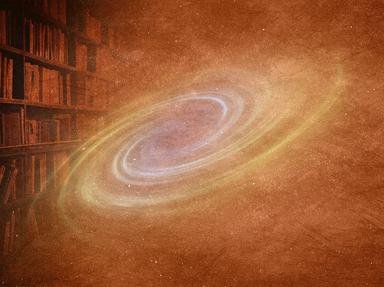Quiz Answer Key and Fun Facts
1. The modern science of Genetics is based on work done in the 19th century by a German monk. What did he use when conducting his experiments?
2. In Physics, it took until the early 1900s for the atomic nucleus to be discovered. However, the atomic theory of matter was first proposed in 1803 by which scientist?
3. Paleontology: In the 1790s French anatomist Georges Cuvier used comparative anatomy in the study of living and fossilized elephants, distinguishing African and Asian elephants as separate species, as well as identifying which extinct species, whose name comes from the Greek for "nipple tooth"?
4. Geology is the study of the origin and structure of the Earth. Since ancient times scientists have studied geology, but it was not until 1912 that Alfred Wegener formulated his theory that the land was once one giant continent that had split apart. What did he call his theory?
5. Surely one of the greatest breakthroughs in the history of science must be the discovery of antibiotics. In 1928 it was found that colonies of Staphylococcus aureus could be destroyed by a mold. What was it?
6. Mathematics: Although analagous concepts had been used in both Mesopotamia and Egypt many centuries previously, which civilisation is credited as being the first to use 'zero' as a number, with one of the earliest mentions in the 7th Century book "Brahmasputha Siddhanta"?
7. Anatomy: Which famous Dutch anatomist of the 1500s is known as the founder of modern human anatomy? He made many corrections to the work of ancient anatomist Galen, such as determining that the human sternum had only three parts (unlike Galen's seven), and that the intraventricular septum of the heart is not porous. He also discovered the mitral valve in the heart.
8. Astronomy: Astronomy is one of the world's oldest sciences, which is no surprise given how easy it is to look up at the sky. Advancements in astronomy have often been made with developments in telescopes, a notable example being the invention of telescopes designed to study what kind of electromagnetic radiation in the 1930s?
9. Evolution: Although Charles Darwin is the most famous evolutionist, there were many before him who put forward the idea of evolution, including a Greek philosopher born in 610 BC, who is one of the first known philosophers to write his work down, and who is regarded by some as the first proponent of evolution. Who is this pre-Socratic philosopher, born in Miletus (in modern-day Turkey)?
10. Space: What was the first man-made object to leave our solar system?
Source: Author
invinoveritas
This quiz was reviewed by FunTrivia editor
CellarDoor before going online.
Any errors found in FunTrivia content are routinely corrected through our feedback system.

